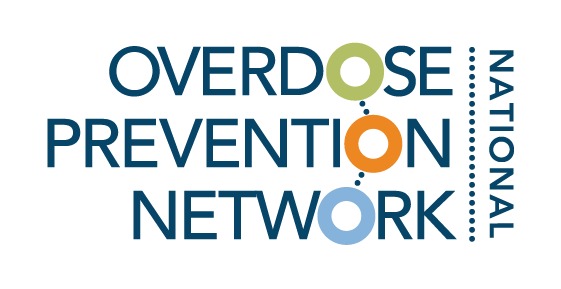
Resource Library
Toolkits, guides, and other resources vetted by experts in overdose prevention.
Filter by category and tags, or search by keyword (ex. COVID-19, harm reduction).
Lowering the Demand for Opioids
As the epidemic evolves, clinicians are prescribing fewer opioids. However, the demand for synthetic opioids including heroin and fentanyl are on the rise. What can we do? This infographic will go through six elements of lowering the demand of opioids, along with a case example.
CDC Guideline for Prescribing Opioids for Chronic Pain
This guideline provides recommendations for primary care clinicians who are prescribing opioids for chronic pain outside of active cancer treatment, palliative care, and end-of-life care.
CDPH Resources for Opioid Prescribers
An inclusive resource sheet with various tools for prescribers.
COPN Safer Prescribing Fact Sheet
Opioids can be safe when carefully prescribed and monitored by a clinician, but they are not generally effective in treating long-term chronic pain and they have the potential to become addictive and misused. Prescribing guidelines are an important mechanism to align practices with evidence and safety. Use this fact sheet to learn more about safe prescribing.
Evidence-Based Strategies for Preventing Opioid Overdose: What’s Working in the United States
This document is to assist community leaders, local and regional organizers, non-profit groups, law enforcement, public health, and members of the public in understanding and navigating effective strategies to prevent opioid overdose in their communities.
A Guide to SAMHSA's Strategic Prevention Framework
Prevention planners are pressed to put in place solutions to urgent substance misuse problems facing their communities. But research and experience have shown that prevention must begin with an understanding of these complex behavioral health problems within their complex environmental contexts; only then can communities establish and implement effective plans to address substance misuse. Read this document to understand the framework that SAMHSA has created.
Coalition Fact Sheet Template
Successful coalitions are prepared to engage the public, recruit allies for the cause, and get the message out to as many people as possible. A coalition fact sheet will help your coalition tell your story including your goals, strategies, and accomplishments. This template provides an outline with examples and prompts for developing a fact sheet that can be used when creating a coalition website, presentation, or other outreach materials.
Communicating for Impact - Tactics, Tools, Timing
One of the biggest challenges for community leaders is how to communicate with impact. Why does this matter? Applying strategy to your communication efforts will directly impact your coalition’s ability to recruit new partners, get and maintain funding, and influence public opinion.
Justification for Support Worksheet
This worksheet will help you outline why your coalition is choosing to continue an existing effort or beginning a new project. Make a strong case and approach partners with confidence for why you should continue to develop your coalition. Think about the benefits that your coalition provides to your community, who are you reaching, what are you accomplishing, and how are you promoting healthier lives.
Well Connected Worksheet
Connections are powerful. They're assets - like money in the bank or social capital --to help us meet our goals of preventing death and disability from opioids. Mapping these assets and creating opportunities for them to contribute to your cause will expand engagement and impact. Use this worksheet to determine who your connections are, who you would like to connect with, and what connections might be missing. Make an action plan to connect with folks that could increase your social capital.
Connections Map
Connections are powerful. They're assets - like money in the bank or social capital --to help us meet our goals of preventing death and disability from opioids. Use this worksheet to figure out where your current connections are within the community, and where you are lacking. Think about connections that may help you sustain your efforts. You may not know the individuals within those groups you would like to make a connection with, but be as specific as possible where you can.
Measurement Plan Template
It is often said that what gets measured gets done. Having a measurement plan will help your coalition use data in a strategic and actionable way, including when to adjust your strategies. It will also help you tell a compelling story to your partners, funders and community. This tool provides instructions on how to create a clear plan across multiple areas of your coalition's work.
Overcoming Data-Sharing Challenges in the Opioid Epidemic
This paper is national in scope and reviews recent changes to the Part 2 regulations. The paper analyzes how Part 2 applies to primary care practices that seek to expand access to SUD treatment, and how providers in different parts of the country are navigating these rules. While focusing on care for opioid use disorder, the paper is applicable to all SUD care.
Utilizing the CDPH Opioid Safety Dashboard
When looking at the news, we often see numbers for the opioid epidemic, but do those numbers represent where you live? How can you communicate, measure and track key opioid safety indicators for your community? This infographic goes over the key elements of using the California Opioid Overdose Surveillance Dashboard, created by the California Department of Public Health.
Worth a Thousand Words: How to Display Health Data
Organizations with access to health data face difficult decisions about how best to visualize these data for clarity, storytelling, and impact. This presentation serves as a guide to select the best visualization options for your data, and explains how to get started on the path to better data presentation.
SafeRx Santa Cruz Infographic 2017
We hear a lot about the opioid epidemic in the news, but not so much about how we are going to stop it. SafeRx Santa Cruz County has been working in collaboration with doctors, pharmacists, and other community members on preventative measures.
Lessons Learned in Communicating with Data
Learn more about how to communicate with data from subject matter expert Andy Krackov. This fact sheet goes through Andy's ten tips on using data to tell stories, providing resources for each key competency.
Pharmacy Access to Sterile Injection Supplies for People Who Inject Drugs
There can be a lot of pushback in communities when it comes to syringe services. This article about how pharmacies can expand over-the-counter sterile injection supplies to prevent the spread of infection, especially during COVID-19.
How To Tell a Story With Your Data
Use this resource sheet to learn strategies for telling a story with your data, along with seeing real life examples, instructional materials and other data related resources.
Marin County Letter to Pharmacists
Opioid prescribing in Marin has decreased 48 percent since 2014, when safe prescribing was made a local public health priority. Read this news release to learn more.



















